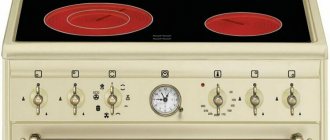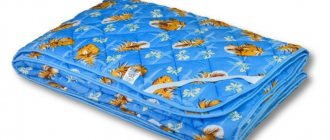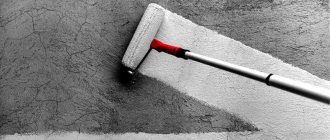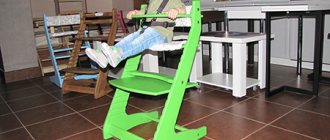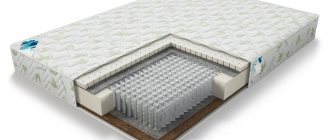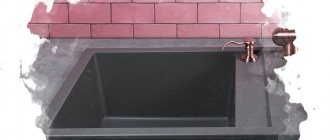How to adjust a mechanical, manual stapler (staple shooter) so that it finishes off the staples?
I have come across two options for adjusting staplers, both had to be adjusted.
I’ll say right away that all these instructions didn’t really help, I had to use about a dozen paper clips to achieve the best result, and then adjust it every 15-20 strokes as I worked. Therefore, the adjustment process is a constant action during use.
Another point - one builder advised relaxing the spring after work so that there is no stress on it during storage, this is the reason that it needs to be adjusted before each work.
Voting for the best stapler
Which stapler would you choose or recommend?
Rapid R153 WORKLINE RUS 5000061
40.00 % ( 2 )
STANLEY Light Duty 6-TR150L
20.00 % ( 1 )
BOSCH HT 14 0.603.038.001
0.00 % ( 0 )
COBALT 240-683
0.00 % ( 0 )
GROSS 41002
0.00 % ( 0 )
Center tool 1609
0.00 % ( 0 )
Inforce 06-09-42
20.00 % ( 1 )
BOSCH PTK 3.6 Li 0.603.968.120
0.00 % ( 0 )
MILWAUKEE M12
0.00 % ( 0 )
BOSCH PTK 14 EDT 0.603.265.520
20.00 % ( 1 )
BISON ZSP-2000
0.00 % ( 0 )
Hammer HPE2000C
0.00 % ( 0 )
Impact force and other characteristics
The defining technical indicator of this device is the impact force. The speed of operation of the tool, as well as the quality of the work performed, depends on it. Obviously, pneumatic models have the best performance, followed by electric options, and mechanical furniture staplers have the least impact force.
The stapler is capable of hammering staples of different lengths. To calculate the force of its impact, it is enough to study the technical data sheet of the model. It should indicate the recommended staple lengths. The longer the maximum length of the staple used, the higher the impact force will be.
In addition to the main characteristics of the product, it is also worth paying attention to the available additions that greatly facilitate the use of the device:
- narrow tip - used to improve accuracy and aim;
- an adjusting screw for changing the impact force is convenient for working with different surfaces;
- It is better that the handle is equipped with rubberized inserts so that the tool does not slip out of your hands during operation;
- if the staple magazine is equipped with a transparent window, such a stapler will be easier to use;
- The handle stopper is also important for safety of use: it will not allow accidental pressing.
When choosing a stapler, hold it in your hands to understand whether it is comfortable to use. It often happens that even a high-quality tool does not fit in your hand.
Types of staplers
There are many varieties and modifications of furniture staplers - they can be divided into 3 groups depending on the design complexity and performance.
- Manual (mechanical)
The simplest and most mobile type of tool that does not require additional accessories and devices. To perform the operation, you only need to apply physical force. Simplicity of design and the absence of wearable elements are the key to the reliability and durability of such a device. Maintenance consists of periodic lubrication of parts. The service life of hand tools is 6-8 years.
A mechanical furniture stapler is suitable for performing simple household operations. For large volumes of work, using physical strength is tiring, and achieving high labor productivity is impossible.
- Electric
The device is designed to perform medium-sized work at a professional level. The tool requires connection to an electrical outlet. There are modifications that run on a rechargeable battery. The impact mechanism is set in motion by pressing a button; no physical effort is required.
The electric motor increases the impact force several times. This allows you to quickly and easily pierce hard materials, and the fastening has increased strength. One of the subtypes of electric tools is a construction stapler, designed for fastening boards, lining, baseboards and other finishing materials.
The disadvantages of an electric device are its relatively high cost, increased weight due to the motor, and a limited working area by the length of the cord.
Electric models quickly fail due to incorrect selection of brackets or violation of operating rules. For beginners, it is better to first purchase simple and unpretentious mechanical staplers.
- Pneumatic
The most productive, powerful and durable models. To operate such tools, a compressor is required, so they are used in furniture factories, where individual workplaces can be equipped with a compressed air supply and a dedicated power line. Their use is not advisable for home and household needs.
Instead of a spring, the tool is equipped with a pneumatic cylinder. It is driven by air entering when the pedal or trigger is pressed. This design solution makes it possible to increase the workforce many times over and perform large volumes of work. The average speed of such pistols is 1 staple per second.
Otherwise, the design of pneumatic models is quite simple and does not require complex maintenance. You just need to periodically clean it and replace the O-ring as it wears out. The main disadvantage is stationarity. The range of the device is limited by the length of the air supply hose.
Two main varieties and their structure
Staple guns, based on the type of energy with which fasteners are driven into the surface of the material, are divided into the following types:
- mechanical;
- pneumatic;
- electric.
Mechanical models
Any furniture stapler has in its design a magazine for fasteners, inside of which there is a clip with guides. Consumables are inserted into it when performing work operations.
The device of a mechanical type staple gun is shown in detail in the photograph below.
The impact-return mechanism (striker) is a plate. Its size corresponds to the geometric parameters of the consumables used. The firing pin is attached to the striker - its shape is determined by the design of the taker. In this case, the other side of the hammer comes into contact with the spring, the compression of which is adjusted using a screw. Shock absorption is provided by a polyurethane shock absorber, which is located inside the body.
Manual staplers can be equipped with two types of springs:
- twisted (shown in the photo above), installed on inexpensive models;
- plate (spring type, photo below), more powerful and expensive compared to the first.
A mechanical staple gun is controlled by a lever (handle). He cocks the impact-recoil mechanism. During transportation or storage, a safety clip protects against accidental operation.
But in order to begin repairing a stapler or to understand from problems what may “break” in it or cause these problems, you should familiarize yourself with the structure diagram of staplers in more detail. We present to your attention two types of mechanical furniture staplers, which are most widespread. The most common is this option, in which the spring adjustment screw is located on top.
Here is another type of stapler, where the spring tension screw is located under the handle. This is a rarer variety.
It can be seen that the operating principle of both mechanisms is similar, and therefore the setup and repair will be almost the same, as well as the causes of problems with the operation of the tool.
The sequence of adjusting the stapler
Setting up a staple gun is needed in the following cases:
- after purchasing the tool before starting work;
- if the stapler stops completely driving in the fasteners;
- when starting to work with a material of a different density than the previous one.
If the stapler stops driving in the fasteners completely, this is due to gradual wear of the spring of the impact mechanism or its loosening. For some time, the adjustment will help, but after that you will need to purchase a new stapler.
You should take into account the dimensions of the fasteners for which the tacker is designed: if the size of the staples exceeds what is allowed according to the operating instructions, then adjustment has nothing to do with it, you just need to select the appropriate consumables.
Mechanical staple guns with a coil spring have a screw that regulates the degree of compression . It is shown in the photo below with a red arrow.
If you tighten the adjusting screw clockwise, the spring will compress more strongly and its potential energy will increase. The result will be a blow of greater force. The ejected staple will go deeper into the surface of the material. Turning the adjuster counterclockwise will loosen the spring. The blow will also become weaker. By rotating the screw, you can adjust the stapler to work with material of varying hardness (density).
For mechanical models of staple guns with a spring (leaf) spring of the impact mechanism, the regulator is located under the handle. By rotating it in different directions, the force of the shot is adjusted. It is necessary to reconfigure the impact mechanism every time you start working with a different material. After adjusting the spring compression, it is recommended to test the tool's performance on a workpiece that is no longer needed.
The adjustment process ends when the fastener with the entire length of the legs enters the material without piercing it with the “back”. It is recommended to practice by rotating the adjuster from minimum to maximum spring compression.
Nuances of choice
The first thing you need to pay attention to when selecting a tool is the type of staples with which it is used. A gun for home use today starts with the most common staple size - type 53. This type is optimal for simple work on fixing fabric or film to wood. The thickness of such staples is 0.7 mm and the width is 11.4 mm. In addition, another type of filling for household tools is used - type 140. Such staples have a thickness of 1.2 mm and a width of 10.6 mm.
The technical characteristics of the models indicate what types of staples it works with. The most common standard sizes for mechanical options are 53, 140, 300, 500. It is necessary to use only those types of filling that are recommended by the manufacturer. If you load staples of the wrong size into the stapler, the tool will not work properly.
When choosing staples for a gun, pay attention to the following features:
- staple depth - this indicator ranges from 4 to 14 mm. The depth must be selected taking into account the material used for the work. When covering furniture with tapestry, a furniture stapler for home is loaded with 8 mm staples, and when working with soft material, such as felt, a depth of 10-12 mm is suitable;
- type of staples - as already noted, this criterion must be indicated on the product packaging. If the type of brackets is selected incorrectly, there is a risk of the device jamming and misalignment. Additionally, if a smaller filling is selected, the tool will fire two staples at once.
If problems arise when choosing, contact consultants for help; they should suggest which type of brackets is most suitable for different types of models.
Before choosing a product, you should decide on its purpose. As already noted, it is important to decide for what purposes the tool will be used - large-scale or household. Manual models are suitable for household needs; pneumatic models are suitable for constant work.
In addition, you need to understand where the device will be used: on the street or in the house? When choosing an electric option for working outside the home, a problem may arise: how to use a furniture stapler without a network? In this case, you will have to additionally purchase battery packs, which significantly affect the weight of the tool.
When choosing a device for everyday work at home, use the following recommendations:
- pay attention to the mobility of the product - it should not depend on extraneous factors, free access to the device should be provided at any time;
- when choosing a tool, study the information on how to use a stapler so that there are no difficulties when working independently;
- If you plan to use the device for a long time, discard the mechanical analogue in favor of electrical options. Using a manual stapler for a long time leads to inconvenience. A product with a motor will do the job for the master.
When choosing it, follow these tips:
- any workshop has a compressor, so choose a pneumatic version of the tool - it works much faster than its analogues and allows you to hammer thousands of staples in a short period of time;
- in production they often work with various materials: plywood, chipboard, beams, so before choosing a furniture stapler, study the types of staples used.
If there is such a possibility, then ask a consultant in the store to test the product by hammering several staples into a piece of thick plywood.
How to choose a stapler?
Depending on the type and volume of planned work, decide on the type of tool: mechanical or electrical. Now you can proceed to the selection, focusing on the types of brackets with which each model under consideration is compatible. This information is indicated on the product packaging. The cheapest and simplest models are usually designed to work with one type of staple. For semi-professional household models, you can use several types of fasteners, including nails and pins.
It is better to choose a more expensive universal stapler, which is useful for many types of household work. The difference in price compared to the simplest models is insignificant, and the scope of application is much wider.
The following staple sizes are suitable for household tools:
The problem of incomplete driving of staples
This problem can be solved by simply setting up the tool. If the stapler does not jam staples, repairs will not be necessary. Just tighten the spring adjustment screw. The tighter the screw is screwed in, the more tension the spring will be under and the next time it is lowered it will push the bracket to the end.
If the problem is not in the settings and the stapler was working normally before and suddenly stopped, most likely the problem is that one of the next staples was jammed and stuck in the slot. Over and over again, the striking mechanism hits it, but it is stuck firmly, thereby preventing the magazine clamping device from moving the next staple to the “starting” position. Here you need to open the magazine and remove the jammed staple. With the next shot everything will fall into place.
Charging a stapler depending on its type
You need to charge the tool magazine depending on its type, which can be horizontal or vertical. In addition, there are some features in charging different types of staplers:
- Filling a mechanical stapler with staples is quite easy. To do this, select the safety mode, then fold back the flap on the back of the tool to gain access to the magazine. We take out the rod with the spring block and insert the required number of staples. Return the rod and install the block into the grooves. Close the sash until it clicks, using furniture staplers; instructions for use will help you understand its operation if it is being done for the first time;
- Working with a pneumatic stapler is much easier and faster, but such a tool requires a compressor, so it is used only on a large scale. Charging of the product occurs by analogy with the mechanical version. First, set the mechanism to protect against accidental shots. Open the hatch with brackets by pressing the button. An empty tray will slide out of the machine - you need to fill it with staples. The filling must be inserted with the wide part towards the structure of the device. Check the evenness of the products and close the block completely. Turn the device over and remove it from the protection, now it is functioning.
As you can see, there is nothing complicated about charging a furniture stapler; if questions and problems arise, you can always watch a detailed video.
Types of devices
To secure materials, you can use several types of devices, the operation of which differs fundamentally. Construction staplers can be classified depending on the type of mechanism. For domestic needs, mechanical and electrical devices are usually used, while pneumatics are indispensable when carrying out work on an industrial scale.
Mechanical
The simplest devices are manual. To work with them you have to apply some effort. However, they cost much less than their analogues, and their risk of failure is minimal.
Mechanical construction stapler for staples
Stapler prices
Construction stapler
The production process does not require electrical power or compressed air. Mechanical models have very little wear on parts. The only thing that sometimes needs to be done is to lubricate the tool. But such a device will not be able to nail any material to the base.
Manual models also differ slightly in mechanism.
With coil spring
Such devices are characterized by an insufficiently strong impact, as a result of which they are intended mainly for working with soft wood species.
Stapler device with coil spring
The tool life is not very significant - no more than 12,000 shots. When driving staples, the master feels a decent amount of feedback in his hand, which leads to fatigue during prolonged work.
A mechanical stapler with a coil spring is designed for working with soft wood and has a short resource
With spring (leaf spring)
The disadvantages that are present in the devices discussed above are not present in spring models. They are easier to cock, the shot itself is much stronger and does not require much effort. The recoil when scoring is almost not felt. The tool life is significantly different from the previous version. It reaches seventy-five thousand blows.
The device of a mechanical stapler with a leaf spring (spring)
Electrical
In devices of this type, the spring is bent using an electric drive. The bracket gets hammered after pressing the trigger lever. After this, the spring bends again and the stapler is ready for use.
Electric stapler. For large volumes of work, such a stapler will be indispensable
Carrying out work for a long time means using just such a tool. The speed of the process and the force of its shot are strikingly different from the characteristics of manual analogues. It becomes possible to use larger consumables (there are models capable of driving five-centimeter staples).
Electric stapler (construction electric stapler)
Electric guns can be mains powered or battery-powered. This helps to expand the range of their use, since it is not always possible to connect to the electrical network at the site of construction work, and the length of the cord is limited. But when installing the battery, the problem of excess weight of the device appears.
Cordless stapler
Prices for battery staplers
Rechargeable stapler
Important! If you accidentally press the button while the tool is suspended, the bracket will not fly out. Electric models are equipped with a special mechanism that protects against firing until the tool is pressed to the base.
Pneumatic
The shot force of such devices is comparable to that of electric models and even exceeds it. But the stapler requires compressed air to operate. Only where there is a compressor can devices of this type be used. The average performance of a pneumatic tool is one shot per second. Long pins and nails are not a problem for such a device. No special care is required for pistols of this type. Only O-rings, which are inexpensive, can wear out.
Pneumatic stapler
Prices for the model range of pneumatic staplers
Pneumatic staplers
Important! Despite the fact that a large number of metal parts are used in the design of pneumatic devices, they weigh very little - about 1 kg.
Most tool models are designed to use one type of consumables. But there are also types of staplers that work not only with staples (rectangular or rounded), but also with nails and pins. Such functional devices can be used for a wider range of work.
Hammer staplers, which are designed to secure staples by striking a tool against a structure, are useful in some situations. In this case, we are not talking about the accuracy of the location of the fastening points.
Staple hammer
To remove the equipment, in some cases it is impossible to do without a device for removing staples.
Staple extractor
Staple remover (anti-stapler): how to use
Prices for staple extractors (anti-stapler)
"Rapid" staple extractor R-3
Safety precautions for use
When working with any type of stapler, you must follow safety rules to help avoid accidents. This is especially true when using the instrument at home when there are children in the family. Listen to the following tips:
- Do not leave the device unattended without turning on the fuse. This applies not only to electrical and pneumatic options, but also to the conventional mechanical counterpart. A working stapler that is not set to the stopper mode may accidentally fire staples;
- When snapping fabric or other materials onto a wooden base, make sure that the staple fits well to the surface. While stretching the canvas and pressing it to the plane with the other hand, pay attention to the location of the fingers;
- periodically adjust the screw that controls the spring tension. Thus, you can use the stapler with different types of wood, protecting yourself from problems.
The furniture gun is in demand among craftsmen and ordinary people, both for home and industrial use. This tool has proven itself well: it is durable, reliable and allows you to repair furniture in a short time.
The problem of issuing a pair of staples at once
How to repair a stapler yourself if it starts producing a pair of staples at once? This problem is more serious. Due to improper use or over time, the firing pin of the impact mechanism may become deformed. If the metal from which the striking part of the mechanism is made was of poor quality, which applies to almost all cheap and Chinese models, its striker can either flatten or bend slightly, as a result of which, with the next blow, it will catch not one, but a pair of staples at once.
DIY furniture stapler repair
Share on social media networks:
These convenient and ergonomic devices have won well-deserved appreciation from both professional furniture makers and home craftsmen. There are even models of staplers on sale that can work with small studs. Using a hammer, with almost inevitable injuries, is gradually becoming a thing of the past. In addition, the speed of work increases significantly. However, this design sometimes becomes unusable. Frankly speaking, I don’t want to throw away my old stapler. Let's talk about how to repair a furniture stapler yourself.
The problem with staples that keep getting stuck
This problem stems from the same area as in the previous case. Even though the striker of the impact mechanism fits into the slot, if it is even slightly bent, staples will constantly get stuck between it and the guide wall of the casing. At first, it will work normally every other time, and then it will become impossible for it to work at all due to the fact that the staples that become clogged over and over again will deform it more and more. In these cases, it can be stated that the stapler is broken, and how to fix it should be described in more detail.
First of all, you should prepare the necessary tools. What you will need to completely disassemble the stapler:
- a regular screwdriver;
- metal file;
- pliers;
- hammer;
- vice (required).
When everything is prepared, you can start disassembling. There is nothing complicated about this and you shouldn’t be afraid that you won’t be able to assemble it later. You simply won't be able to do it any other way. For repair you need:
- Open the magazine and remove the remaining staples.
- Turn out the adjusting screw completely.
- Remove the released spring through the hole at the top.
- Now disassemble the body. The casing parts are held in place with pins. They have molded caps on one side and locking washers on the other. They must be pulled out so that each pin can freely come out of its hole.
For repairs, it will be enough to remove two pins from the impact mechanism side.
- Afterwards, the entire stapler device appears before you in all its glory. It is necessary to remove the impact mechanism and examine it.
It happens that the stop on the impact mechanism against which the spring rests may break off. In this case, only welding will help, and it is not a fact that the tool will last for a long time in this case. As a result, the welded stop will still fall off and you will have to buy a new stapler.
When the tool is completely assembled, we check it, at the same time adjusting the spring. If everything is fine, you are great. If not, it means that something was “missed” somewhere. You will have to disassemble everything and check the evenness of the parts of the impact mechanism more carefully. Therefore, it is better to do everything efficiently the first time and check it ten times.
Breakdown prevention measures
Some craftsmen advise that when storing a tool for a long time, loosen the screw of the furniture stapler that regulates the compression of the spring. The less the spring is compressed, the greater the possibility that it will not sag in the shortest possible time and will last several times longer than stated in the warranty card.
An important factor in preventing “diseases” of a tool such as a stapler is its lubrication. Regardless of whether it was in constant use or in storage, it is advisable to lubricate the mechanical parts of the tool once every three months, then you won’t have to rack your brain every time about why the stapler is not working well and how to repair the tool. What should be lubricated and how:
- Unscrew the adjustment screw completely, pour some sewing machine oil into the hole, screw the screw into place and fire a few dry shots.
- Then open the magazine where the staple blocks are inserted and pour some lubricant into the slot of the impact mechanism. Raise the stapler upside down and fire a few more blank shots.
- It is also advisable to lubricate the mechanism (rammer) for feeding staples.
This simple maintenance won't take much time, but will extend the life of your instrument.
How to use a furniture stapler: device, operation, tips
A furniture stapler is a fairly universal tool with which you can not only perform furniture upholstery procedures, but also a number of other construction operations.
Today, there are several types of similar equipment, differing in their operating principles:
Pneumatic staplers are used in industry, and electric and manual staplers are used in everyday life. Models belonging to the latter type are the most common in the furniture industry due to their mobility and ease of use. Let’s use this example to look at the principle of operation, operation and repair of furniture staplers.
However, before moving on to this procedure, I would like to say a few words about staples and their varieties.
DIY furniture stapler repair
Share on social media networks:
These convenient and ergonomic devices have won well-deserved appreciation from both professional furniture makers and home craftsmen. There are even models of staplers on sale that can work with small studs. Using a hammer, with almost inevitable injuries, is gradually becoming a thing of the past. In addition, the speed of work increases significantly. However, this design sometimes becomes unusable. Frankly speaking, I don’t want to throw away my old stapler. Let's talk about how to repair a furniture stapler yourself.
Characteristics and types of furniture brackets
The main indicator that is taken into account when choosing a bracket is its depth. Depending on the nature of the work performed, this indicator can vary from 4 to 14 millimeters.
So, for example, in order to carry out the procedure of upholstering furniture with fabric, a staple with a depth of 8 millimeters will be sufficient, while for fixing thicker materials, a staple with a greater depth should be selected.
Also, depending on the overall dimensions, staples are divided into the following types:
- 53 - is the most common. Staples of this type have a width of 11.4 millimeters and a thickness of 0.7 mm. The depth of this fastening element varies from 4 to 14 millimeters;
- 140 – having the following characteristics: width – 10.6 millimeters, thickness – 1.2 mm, depth – similar to the previous type;
- 36 – this marking means that the stapler can shoot staples that have a semicircular shape and are mainly used for cable installation;
- 300 - These are special nails intended only for the stapler.
When choosing a bracket, you should also take into account the structure of the material from which it is made.
TOP 13 best staplers
| Photo | Name | Rating | Price | |||
| Mechanical staplers | ||||||
| #1 | Rapid R153 WORKLINE RUS 5000061 | ⭐ 100 / 100 2 — votes | Find out the price | |||
| #2 | STANLEY Light Duty 6-TR150L | ⭐ 99 / 100 1 — vote | Find out the price | |||
| #3 | BOSCH HT 14 0.603.038.001 | ⭐ 98 / 100 | Find out the price | |||
| #4 | COBALT 240-683 | ⭐ 97 / 100 | Find out the price | |||
| #5 | GROSS 41002 | ⭐ 96 / 100 | Find out the price | |||
| #6 | Center tool 1609 | ⭐ 95 / 100 | Find out the price | |||
| #7 | Inforce 06-09-42 | ⭐ 94 / 100 1 — vote | Find out the price | |||
| Cordless staplers | ||||||
| #1 | BOSCH PTK 3.6 Li 0.603.968.120 | ⭐ 100 / 100 | Find out the price | |||
| #2 | MILWAUKEE M12 | ⭐ 99 / 100 | Find out the price | |||
| Network staplers | ||||||
| #1 | BOSCH PTK 14 EDT 0.603.265.520 | ⭐ 100 / 100 1 — vote | Find out the price | |||
| #2 | BISON ZSP-2000 | ⭐ 99 / 100 | Find out the price | |||
| #3 | Hammer HPE2000C | ⭐ 98 / 100 | Find out the price | |||
| #4 | Kolner KES 650 | ⭐ 97 / 100 | Find out the price | |||
Which stapler would you choose or recommend?
Take the survey
Furniture stapler diagram
A manual construction stapler has a magazine into which a clip of staples or special nails is loaded. The bracket is hit by a firing pin, which is attached to the firing pin. The size of the striker in the tool depends on the dimensions of the consumables (staples) used. The hammer, in turn, touches the spring, the degree of compression of which is adjusted by a special screw. The shock is absorbed using a shock absorber located inside the stapler.
See the diagram for the device of the stapler:
A coiled mainspring is installed on inexpensive models.
A stapler with a leaf spring is more powerful and expensive.
How to use a stapler
Refueling
In order to load the stapler with staples (i.e. load the staple gun), you must first move away the spring intended for pressing them. The staples themselves are placed in a special groove, in which, in fact, they need to be placed. After this, the spring is put in place. The tool is completely ready for use.
Video: how to thread a stapler with staples
Now you know how to insert staples into a stapler, we can proceed directly to work.
Shot
In order to fix the necessary element, you should firmly attach the device to the place where you plan to hammer the bracket. After this, without lifting the device from the surface, you must press the trigger button (lever). If these manipulations are successful, you will hear a characteristic sound and see a staple inserted into the material.
Tips and tricks
In order to protect yourself when working with a construction stapler, you should follow some rules:
- If you use a mechanical model of the device, it is necessary to adjust the screw regulator. This operation should be performed on a piece of rough material by rotating the screw from minimum to maximum. If the staple goes in all the way from the first shot, you can start working on the “finishing” part. Otherwise, re-adjustment is required;
- In order to drive the staples at the same distance, you should first mark the necessary places with a pencil or ballpoint pen;
- Hold the material with your free hand so that when firing it does not move from the pre-designated place;
- Keep track of the number of staples in the “store” so as not to be left without a single fastening element at the most inopportune moment;
- After finishing work, secure the handle with the safety catch to prevent spontaneous or accidental firing.
In addition to all the above tips, you may also need help repairing this construction tool, since the stapler, like any other equipment, tends to break.
Repair
The most common cause of stapler failure is a breakdown of the impact mechanism . However, in order to get to it, you must first disassemble the tool. This can be done by performing a number of simple operations:
- Remove the adjusting screw;
- Remove the spring;
- Remove the protection cover;
- Remove the pins;
- Remove the lock washers.
If the list of actions does not make it clear to you how to disassemble the stapler, then you can see this in the video below.
After performing all the above manipulations, you will be able to see the drummer, which, for the most part, fails due to the exhaustion of its resource.
In order to repair this element, you should remove it, place it in a vice and, using an ordinary file, give the striker its original shape.
That's it, the repair is completed, and the instrument is again in full combat readiness.
Tips on why the stapler does not work and how to fix it:
- If your tool does not finish (does not finish) the staples, then try tightening the spring, it may have weakened;
- If a construction stapler bends the staples, try adjusting the spring tension bolt (relax or tighten, experiment). Another probable cause of malfunction is a mismatch between the type of staples and the structure of the material - for chipboard and plywood it is recommended to buy staples made of hardened steel;
- If the staples do not come out of the stapler, but bend and get stuck inside, perhaps the striker (tongue) that pushes them has become rounded and needs to be sharpened;
- If the mechanism itself works, but the staple does not fire, it is possible that the staple does not grip, or the firing pin has worn out. Try filing the firing pin and turning the damper with the other side.
Watch the video to see how to repair a staple gun with your own hands.
Video: do-it-yourself stapler repair
How to disassemble a furniture stapler, what to do if it jams. What could be the reason, what to do if the construction stapler does not fire staples:
The real-time video shows step by step how to disassemble the stapler, what could be the cause of the breakdown and how to fix it yourself, as well as how to assemble the stapler.
Video “furniture stapler”: how to use, how to charge, and what staples are needed
YouTube: please provide the correct link
To drive staples at the required distance, it is best to mark such places in advance using a pen or pencil. You can also use a clamp, which must maintain the same distance when driving in fasteners without preliminary markings.
Don’t forget to also hold the material while making shots so that the material cannot move when driving in the staple. Do not forget to also monitor the presence of staples so as not to be left without them at the most inopportune moment for you.
When the tool is not in use, secure the handle with the safety lock. This is required for safety reasons. By following these simple recommendations, you can easily cope with upholstery of a sofa or other necessary task associated with a furniture stapler; the price always depends on the type of tool and its manufacturer.
Review and modification of the furniture stapler
Good afternoon, dear readers! I decided to share with you information about a good furniture stapler and its slight modification.
The stapler was purchased on Aliexpress, link - https://ali.pub/37ymb1
How to buy profitably on Aliexpress, see here
March coupons for the site's birthday
$5 discount when purchasing over $25 (coupon 5/25), link ( https://ali.pub/378ovx )
$6 discount when purchasing over $30 (coupon 6/30), link ( https://ali.pub/378p0e )
$8 discount when purchasing over $50 (coupon 8/50), link ( https://ali.pub/378p3w )
You can take no more than two coupons of each denomination. You must first log in to the site! Coupons expire on April 1st. Coupons 6/30 and 8/50 appeared relatively recently, so they are taken without problems.
If you manage to get a coupon of a large denomination, but you need to buy a cheaper product, we use the so-called “add-on”. To do this, we bring the cart up to the coupon value, apply the coupon and click “Checkout”. We do not pay for orders. Go to my orders, select the one you need and pay for it. The discount on the coupon will be distributed in proportion to the amount of orders.
I didn’t plan to write a review, since I’m more of a reader than a writer, so I apologize in advance if I missed any points.
A stapler is a tool designed for fastening a particular material by driving staples:
Despite the rather simple device, the tool is very useful for various construction or household work. It is mainly used at dachas for attaching film to greenhouses, attaching hydro or vapor barriers, insulation tapes, upholstery and other work.
The stapler arrived in a regular postal package. There was no useful information on the packaging, so I threw it away as unnecessary. Judging by its appearance, the stapler is perfectly new, without scratches or other defects. I've already worked on it a little, but it's still like new:
Like most such devices, the stapler is equipped with a safety (transport) bracket:
In the working position, the lever protrudes quite strongly, so it will be more convenient for people with long fingers to work with it:
The stapler uses regular staples in several sizes (4-8mm and 4-14mm):
I use fairly cheap 10mm staples:
They have an optimal height and thickness of 1.25mm
Design:
Its design is similar to those sold in our stores, with the exception of some important aspects:
- the case is completely made of metal - allows for rough handling and accidental falls, and also allows you to count on some strength and durability
- extended spring compartment with a stiffer spring - you can count on good impact force
— adjusting screw — allows you to change the impact force when working with soft or brittle materials
What I saw in our stores for 300-400 rubles - either with a plastic body, or low-profile with low impact force. Analogues start from 500 rubles.
The design is incredibly simple:
Using the lever, the working spring is cocked and in the uppermost position the firing pin is released, which, under the action of this same spring, hits the bracket, pushing it out of the magazine. The force of the impact directly depends on the stiffness of the spring.
Spring-loaded staple supply unit:
The magazine itself is removable, so if the staples get stuck, you can easily pull it out and fix the problem:
It rests on these two supports:
Before removal, you must first remove the staple supply unit, otherwise they will quickly fly out:
The firing pin is, of course, metal:
The adjusting screw has some peculiarity and does not tighten completely (maximum impact force), but rests against the protrusion of the housing:
If you unscrew it, you can feel the spring of the impact mechanism:
It is generously lubricated with thick lubricant, which in itself is a big plus.
Dimensions:
The sizes are small, it fits comfortably in the hand:
Now for the improvements:
Despite the high-quality execution, there was not always enough energy, so the idea arose to slightly modify the design. To evaluate the modification, I used regular seven-layer plywood and a piece of compressed wood board:
Let me warn you right away that the slab is very dense and not all nails can be driven into it. When setting the maximum force, the stapler was unable to completely drive the staples into either the slab or the plywood:
Therefore, first of all, unscrew the adjusting screw and tighten the stop:
This will give us another four millimeters:
The effect becomes noticeable immediately and you can stop there. But I recommend modifying the screw a little more, thereby compressing the spring of the impact mechanism even more, since it has a good length:
To do this, you need to put several washers on the screw:
It’s good if you have the ones you need in your bins, since not all washers will fit. You need to select a washer so that it sits on the protruding “neck” of the screw, i.e. had the appropriate diameter and fit through the mounting hole in the body. I found only one suitable washer out of a whole bunch, which also had to be drilled out a little:
Of course, if you don't have the right ones, you can buy a couple of them at a hardware store, or use Grover washers, they fit perfectly:
But with them it is difficult to adjust the force, since they rest against the end of the spring and make it difficult to turn the adjusting screw. On the other hand, adjustment is not required so often, so this can be neglected.
After all these movements with the adjusting screw tightened, the staples completely pierced the plywood, but they still couldn’t cope with the slab and simply moved the staple:
The photographs show that the impact force has increased several times. The stapler copes with ordinary wood with a bang, but it is now used very rarely. There are no problems with fiberboard and HDW, and these are the most popular materials in furniture production. After modification, I had already successfully “fired” the old chair and did not have to finish off the staples with a hammer anywhere. Without modification, they only went to the middle, which prompted me to do this “doping.”
The only disadvantage of this modification is increased wear (depletion) of the striker stop:
It can also be easily fixed with a simple file, but you will need to completely disassemble the stapler.
In general, I recommend any metal stapler for modification, especially low-profile ones with low impact force.
The stapler was purchased on Aliexpress, link - https://ali.pub/37ymb1
How to buy profitably on Aliexpress, see here
March coupons for the site's birthday
$5 discount when purchasing over $25 (coupon 5/25), link ( https://ali.pub/378ovx )
$6 discount when purchasing over $30 (coupon 6/30), link ( https://ali.pub/378p0e )
$8 discount when purchasing over $50 (coupon 8/50), link ( https://ali.pub/378p3w )
You can take no more than two coupons of each denomination. You must first log in to the site! Coupons expire on April 1st. Coupons 6/30 and 8/50 appeared relatively recently, so they are taken without problems.
If you manage to get a coupon of a large denomination, but you need to buy a cheaper product, we use the so-called “add-on”. To do this, we bring the cart up to the coupon value, apply the coupon and click “Checkout”. We do not pay for orders. Go to my orders, select the one you need and pay for it. The discount on the coupon will be distributed in proportion to the amount of orders.
Why do you need a stapler?
The device can be called a construction or furniture stapler, as well as an automatic staple gun. The devices were invented about 80 years ago, although the prototype of the modern device was used back in the 18th century.
The history of the stapler dates back to the 18th century
The main purpose of the tool is to fasten materials to the base. As a rule, it is wood or wood-containing boards (chipboard, MDF, etc.). Everything that a stapler can penetrate is nailed to such a surface. This can be a film or membrane for insulating a building, furniture upholstery or its components, roofing felt, carpeting, wooden slats, plastic finishing materials, etc.
The most common use of a construction stapler is in the woodworking industry and in furniture production.
The stapler can also be used to stitch together identical materials. In this case, the bracket is bent (the operation of such devices resembles the principle of operation of office stationery analogues). For example, you can’t do without a stapler when making corrugated cardboard packaging for large equipment. To do this, the tool must be equipped with a counter anvil.
Curling staples are used for stitching cardboard
Industrial stapler for cardboard
Prices for a reinforced stapler for cardboard
Reinforced stapler for cardboard
For convenience, many pistol models used in production are equipped with a foot pedal.
Using a stationary stapler
Stationary models
Any types of fastenings made using a stapler are reliable and durable.


